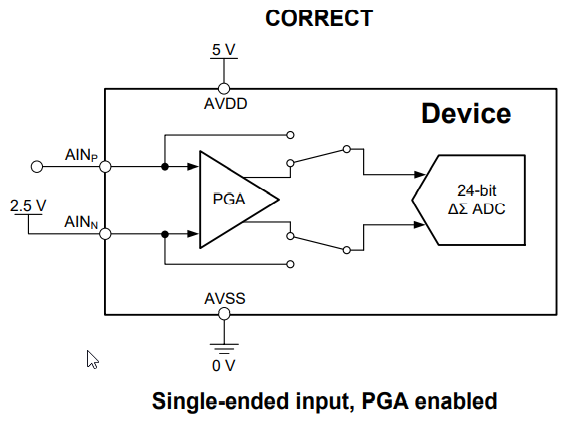My application needs 12: 0-5V ADCs, but would also like to be able to use the PGA for smaller single ended signals.
I think I understand how to connect and program the part, but just want to confirm. Is this right?
Using the model below:
- Put a 1uF cap on REFOUT to REFCOM
- Tie REFCOM to AVSS
- Tie REFOUT to AINCOM to act as AINn
- AVDD to +5V
- REFP0 to +5V
- REFN0 is not connected
- Program REFSEL=0
- Program REFCON=1
- Program MUXN to AINCOM
- Program MUXP to the desired Channel to be AINp
- Repeat previous for next channel.


